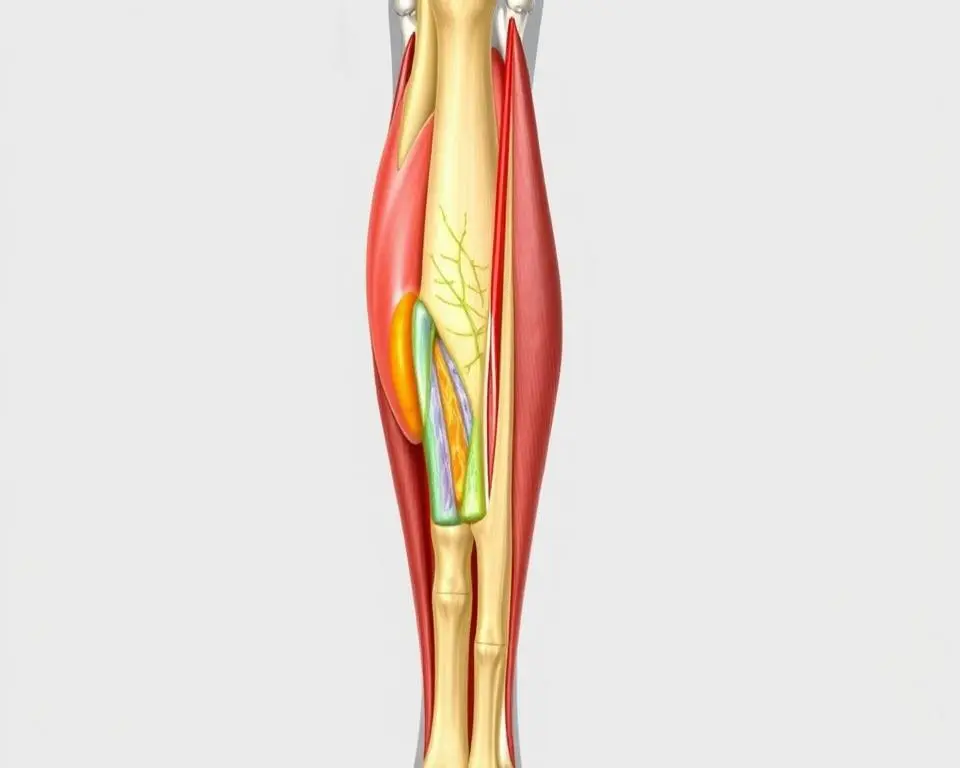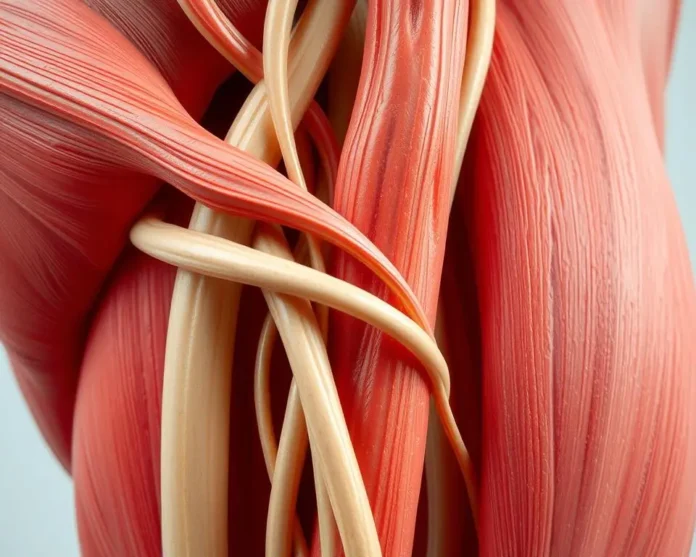When it comes to fitness, most workouts place the focus on building strength and definition in your muscles. But our muscles aren’t the only structures in our body that help us lift, run and do most of our daily tasks.
Our tendons are a key but overlooked component of our musculoskeletal system – serving an equally important role as our muscles in our ability to move.
Tendons are in fact indispensable components of our health and fitness, and here is how we can keep them strong. Tendons are definite tough, fibrous tissues that connect our muscles to bones. They are key to our health and how well we move. They help us to move our joints and stabilize ourselves in whatever activity we may be doing, be it just running errands on a routine daily basis or competing in sports.
The tendons really are the base of good movement and stability in the joints. These allow the muscles to perform well, giving us our best performances. However, if they are weakened or damaged, they will make us painful, limit how far we can move, and increase injuries.
In this paper, we will discuss how tendons work in the body and how to maintain them. This is very important for a person who wants to stay active, avoiding injuries and thus staying healthy.
Important Take Away
•Tendons are vital for linking muscles to bones, an important factor for the proper execution of body movements and stability at the joints.
•Healthy, strong tendons are fundamental to maximum physical performance and must be maintained to steer clear of accidents.
•Proper warm-up, strengthening, and recovery will maintain healthy and robust tendons.
•Early identification of tenderness and proper professional help will prevent complications.
•Tendons should receive an integrated approach so that the active lifestyle is without pain.

Understanding the Basic Role of Tendons in Body Movement
Tendons are the movers and groovers of our body; through them, we can get a lot done. Without muscles connecting them to our bones, it becomes rather tough to perform most physical activities. Understanding how tendons work helps us appreciate their role in our fitness and health better.
Basic Anatomy and Function of Tendons
Tendons are strong collagen fibers. They connect muscles to bones and thus help us move smoothly. It is through this attachment that the body can really begin to move and function well.
Connection Between Muscles and Bones
Muscles and bones are closely connected by tendons. When muscles contract, they pull the tendons, which then cause movement in the bones. This collaboration enables a person to move in numerous ways from minute expressions to large movements.
Types of Tendons in Humans
• Achilles Tendon: Connects calf muscles to the heel; enables walking, running, and jumping.
• Patellar Tendon: Connects quadriceps to the shin; enables straightening of the knee and stability.
• Rotator Cuff Tendons: There are four tendons around the shoulder, which enables it to move and stabilize.
• Flexor and Extensor Tendons: In hands and fingers, they support the numerous detailed movements and dexterity.
Understanding how tendons work keeps our musculoskeletal health intact. It keeps our tendons strong and flexible. Such knowledge enhances our capability to keep physical performance at an optimal state and health in general.
The Science Behind Tendon Strength and Elasticity
Tendons are actually great components of our body; they enable us to move about and also enable us to remain stable. Tough and yet elastic, tendons are capable of holding heavy loads and also ensure smooth mobility of joints. Let’s see how this is.
The toughness and flexibility of tendons come from their contents in collagen fibers. These are long proteins that are structured in a specific orientation. They are actually the creation of bundles called fascicles, which make up the structure of the tendon.
The setup of these fibers is the secret to the tendon strength of a tendon. They align with the force applied, which readily allows the muscles and bones to work in unison. This alignment is what also enables tendons to be elastic, in storing and releasing energy.
However, tendons are not just made of collagen. They do contain a little bit of everything else too; proteoglycans and elastin, for instance. These contribute to the tendons’ strength and flexibility, making them work better.
Knowing how tendons work helps maintain healthy ones. Knowing the importance of collagen in maintaining tendons, it makes it possible to take better care of our tendons. It, therefore, means that we shall perform better in physical activities.
Common Injuries and Problems That Effect Tendons
Tendons are one of the most significant portions of the body. But, in reality, they can suffer from various injuries and problems. Learning these common issues helps to keep tendons healthy and prevent long-term damage.
Tendinitis and What Causes It
Tendinitis is a common condition that causes tendon pain. It is often caused by too much use, repetitive actions, or sudden activity increases. For instance, it can affect several other tendons like the Achilles, rotator cuff, or patellar tendon. Symptoms include stiffness and swelling with reduced range of motion.
Overuse Injuries
Overuse injuries occur when tendons are under more stress or strain. Typically, this arises from strenuous or lengthy physical exertion without adequate rest. Such injuries may result in micro-tears on the tendon and, consequently, weaken it.
Tendon Problems Due to Age
With age, tendons may degenerate and present with various problems. In some cases, conditions such as tendinosis or tendon calcification reduce flexibility and strength and increase susceptibility to tears or ruptures, thus compromising mobility and quality of life.
It should be understood and known when a tendon gets injured or problems begin. This will help getting proper medical care as early as possible and initiating the right treatment and recovery. Making aware of the causes and proper early interventions of the problem, we can prevent long-term issues by maintaining strength of tendons.
Essential Nutrients for Healthy Tendons
Maintaining fit and healthy tendons is foundational for good performance and health in general. Diet is a good part of this. Now, let’s have a look at some of the key nutrients in keeping your tendons healthy, collagen making and repairing.
Protein: Tendons need protein since it helps in producing collagen, which is the primary material of the tendon. That is why adequate amounts of protein through diet or supplement has boosted collagen making and kept tendons fit.
Vitamin C: Vitamin C is also necessary for tendons. The vitamin helps create and develop collagen fibers. The vitamin C also protects from damage and heals.
• Copper, zinc, and manganese help in creating collagen and building up tendons.
• Vitamin B6 and vitamin B12 aid in the repairing and developing of tendons.
• Omega-3 fatty acids like in fish oil reduce inflammation and are supportive towards tendons.
More nutrients in the diet like these help to keep healthy tendons. It decreases the risk of an injury and also increases the overall physical function.
“Proper nutrition helps form strong, resilient tendons that are able to withstand the challenge of everyday life.”.

Proper Warm-up Techniques to Protect Your Tendons
Having your body ready for exercise is an important part of keeping healthy tendons. Using the right type of warm-up exercises will help minimize the risk of injuries and enable you to perform better. Now, let’s talk about what good warm-ups look like.
Dynamic Stretching Techniques
Dynamic stretching needs to be included in your warm-up. This involves movement that gradually stretches your range of motion. Dynamic stretching improves blood flow, makes joints slippery, and readies muscles and tendons. Thus, it prepares the body for the workout ahead and cuts the risk of injury.
Progressive Loading Principles
Then, it is wise to add progressive loading in your warm-up. It means you slowly increase the intensity and time of exercising. That way, your tendons become stronger and more prepared for exercise. To work on strengthening your tendons, make an easy move first and then tougher until the end.
Cool-down Importance
The cool-down is as important as the warm-up for your tendons. Some gentle stretches and easy exercises will relax the muscles and the tendons. They aid faster recovery and prevent lactic acid buildup, which helps your tendons heal and get stronger more rapidly.
The way to avoid this is by making sure you have a good warm-up involving dynamic stretching, progressive loading, and a good cool-down as well. This will protect your tendons while lowering the risks of injury during exercise.
Best Exercises to Strengthen Tendons
It is good for the health of your muscles if your tendons are kept strong. There are several exercises that you should add to your workout routine. Here are some effective ways to strengthen your tendons.
Resistance Training:
Tendons respond very well to resistance training, such as weightlifting or resistance bands. They strengthen by adding more collagen, their primary material. This makes them tighter and less prone to injuries.
Plyometric Exercises
Plyometric activities, including jump and hop exercises, also improve your tendons. They make your tendons stronger as well as more elastic. This will cause you to move much better, thereby reducing the chances for injuries.
• Box jumps
• Squat jumps
• Hurdle hops
• Plyo push-ups
Start simple with plyometric exercises, but progressively do harder ones as you gain strength in your tendons.
Eccentric Training for Tendon Resilience
In eccentric training, training focus is taken on the lowering phase of an exercise. In that case, a tendon becomes more powerful and, therefore, will be able to handle loads with a much decreased chance of injury.
Exercise Description
Eccentric Heel Drops: Lower down your heel toward the ground slowly; focus on the lengthening phase.
Eccentric Leg Curls: Lower your legs backward to the initial position during curling of your leg.
Eccentric Push-ups: Slowly lower your body toward the ground during a push-up.
Other training activities, like resistance exercises, plyometric exercises, and eccentric exercises, increase and maintain tendon strength so that the risk of injury is reduced and your physical performance enhanced.
Recovery and Rest: Critical Components of Tendon Maintenance
Maintaining healthy tendons is in the best interest of your fitness and performance. Recovery and rest are quite essential. They ensure proper healing and strengthening of your tendons so you are not overtraining or injuring yourself.
Recommended Recovery Periods for Tendons
Tendons need more time to heal compared to muscles. The muscles might take 24-48 hours to heal whereas tendons will take 72 hours or more. A tendon recovery may take additional days compared to the needed time thus avoiding problems arising from tendons and injuries.
Signs of Overtraining
•Pain or soreness in the tendons that continues for a long time.
•Reduced range of motion or flexibility.
•Loss of strength or power output.
•Easiness to injury once again
If you notice these overtraining signs, Immediately, slow down. You need to provide your body with more rest periods.
Role of Sleep in Repairing Tendons
Basically, sleep is a sure and proper restorer of the health of your tendons. It is when your body secretes hormones that actually help in the repairing process of the tendons. This sleep deprivation can easily weaken your tendons and slow its healing process.
“Adequate rest and recovery are fundamental to healthy, strong tendons as well as preventing overuse injuries. Payment to your body’s recovery needs is every bit as important as your routine workouts.”
Preventing Tendon Injuries
Healthy tendons mean a fit and injury-free you. To protect your tendons, just try a few simple steps. Emphasize doing exercises right, mix up your workouts, and don’t forget to rest.
Emphasize Proper Form
Doing exercises correctly is vital for tendon safety. Make sure your body is aligned right and you’re moving smoothly. A fitness expert can teach you the right way to do exercises that strengthen your tendons.
Implement Cross Training
Some exercise methods help avoid injuries to tendons by providing variety. Variance of activities spreads stress evenly over all the tendons in your body. Swimming, cycling, and yoga are good cross training exercises.

Practice Recovery and Rest
Letting your tendons rest is the key to staying uninjured. Always give yourself time off and listen to what your body is communicating with you. When your body is sore or painful, it’s already a signal for you to take it slow. Good sleep and nutrition are also aids to maintaining healthy tendons.
Following these pieces of advice will leave you keeping your tendons in impeccable shape. Staying active and healthy for the long run will then be made easy.
Modern Training Techniques for Tendon Building
For maximum tendon strength and elasticity, you can use advanced training techniques. These exercises are not only conditioning your tendons but might also benefit health joints and avoid injuries.
Benefits of Eccentric Training
Eccentric training is the process of lengthening under tension of muscles. It is excellent for tendons. Muscles are made stiffer, enhancing the manner in which forces are taken and decreases injuries. Incorporating eccentric activities, like controlled lowering in the squats or step-downs, strengthen the tendons over time.
Load Management Techniques
A structured progressive overload program is very important in the maintenance of health in your tendons. It’s all about adding weight, reps, or volume gradually to allow your tendons to adapt and strengthen.
Progressive Overload Principles
Using progressive overload is crucial for even stronger and tougher tendons. Gradually increasing the demand on tendons helps them adapt and grow. For example, doing more intense or frequency exercises but with just enough rest so as not to injure.
| Advanced Training Method | Benefits | Examples |
| Eccentric Training | Increased tendon stiffness, improved force transmission, reduced injury risk | Controlled lowering phases in squats, step-downs |
| Load Management | Gradual tendon adaptation, prevention of overuse injuries | Incrementally increasing weight, reps, or volume |
| Progressive Overload | Stimulation of tendon growth and development | Gradually increasing intensity, duration, or frequency of exercises |
By adding these advanced training methods to your routine, you can unlock your tendons’ full potential. This leads to better athletic performance, less injury risk, and healthier joints for the long term.
When to Engage a Professional for Tendon Problems
Minor tendon pain can be self-managed. However, one should know when to seek medical care. When tendons start aching, swelling, or even stiffness when trying to bend them, then one has to go for a doctor.
Tendinitis may cause inflammation and pain. Maybe you will have to undergo physical therapy. Also, getting older, or merely overusing your tendons may also warrant an orthopedic or sports medicine physician.
You must consult a doctor who shall give you a proper check-up, correct diagnosis, and treatment plan tailored specifically to your needs. This could involve physiotherapy, anti-inflammatory drugs, or even surgery in extreme cases. Professional assistance may allow for better mobility, lesser discomfort, and not worsening the condition of the tendon.
How do tendons connect muscles to bones?
Tendons link muscles to bones in a strong, flexible way. One end attaches to a muscle, the other to a bone. This connection lets muscles pull bones, causing movement and action.
What are the different types of tendons in the human body?
The body has many types of tendons, each with its own role. Examples include the Achilles tendon and rotator cuff tendons. These tendons support movement and joint stability in different areas.
How do the biomechanical properties of tendons contribute to their function?
Tendons have unique properties like strength and elasticity. Their strength helps them handle muscle forces. Their elasticity allows them to store and release energy, making movement efficient.
What are some common tendon injuries and problems?
Tendons can face injuries like tendinitis and overuse problems. Tendinitis is caused by repetitive stress. Overuse injuries happen from too much or wrong physical activity. Aging can also wear down tendons, affecting their health
What nutrients are important for maintaining healthy tendons?
Good nutrition is key for tendon health. Protein and vitamin C are crucial. Protein helps with collagen and repair, while vitamin C aids in collagen production and regeneration.
How can proper warm-up and cool-down routines help protect tendons?
Proper warm-up and cool-down routines are vital. Dynamic stretching and progressive loading in warm-ups prepare tendons. Cool-downs help with recovery and injury prevention.
What exercises can help strengthen tendons?
Exercises like resistance training and plyometrics can strengthen tendons. Targeted exercises improve tendon strength and resilience. This reduces injury risk and boosts performance.
How important is rest and recovery for tendon health?
Rest and recovery are crucial for tendon health. Adequate rest between activities and recognizing overtraining signs are important. Sleep also aids in tendon repair and regeneration.
When should someone seek professional help for tendon issues?
Seek medical help for persistent or severe tendon pain. Healthcare providers can diagnose and treat tendon problems. They offer the right treatment to address issues.




